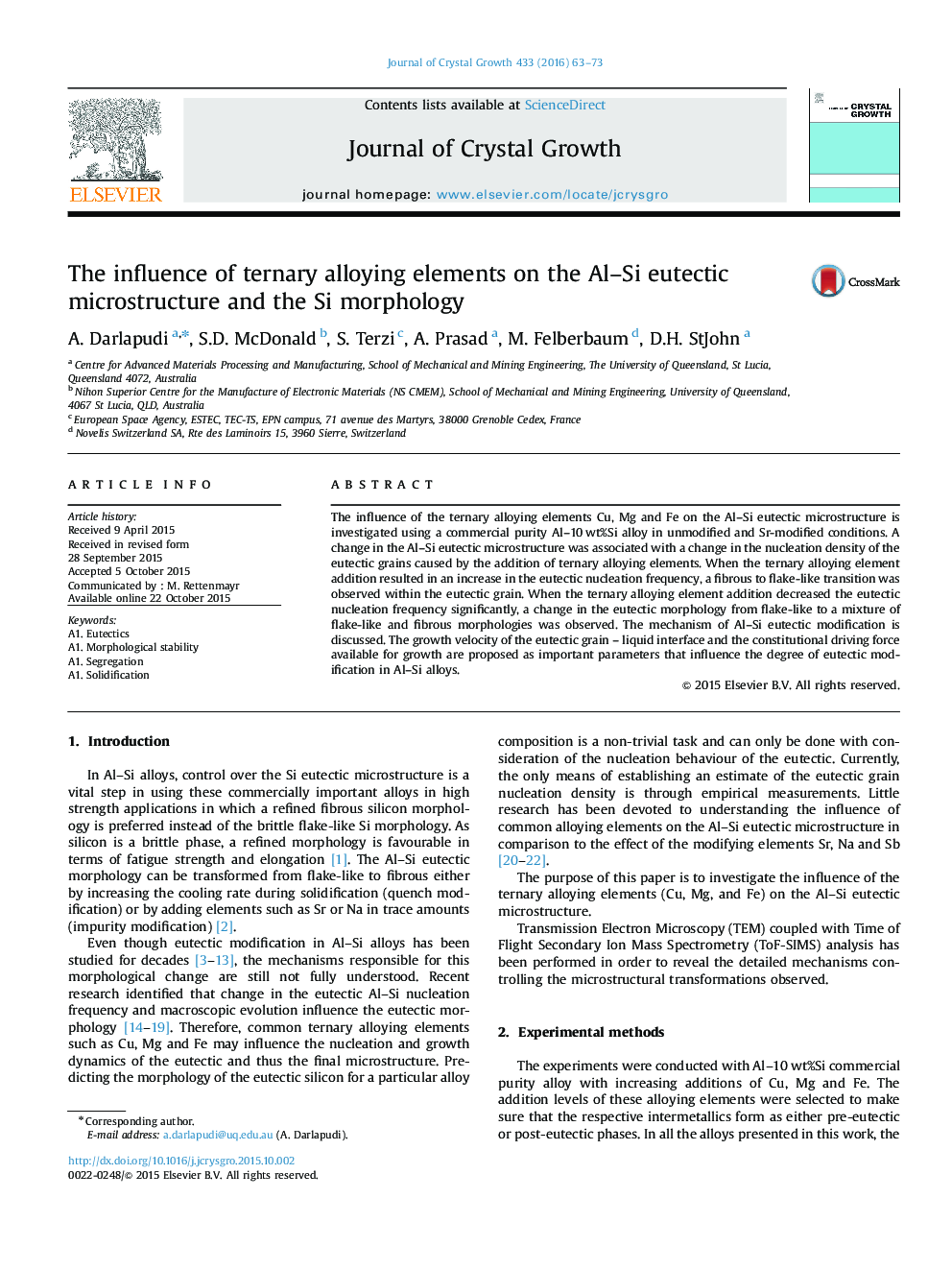| Article ID | Journal | Published Year | Pages | File Type |
|---|---|---|---|---|
| 1789818 | Journal of Crystal Growth | 2016 | 11 Pages |
•Cu, Mg and Fe additions affect the eutectic silicon morphology in Al–10Si alloys.•The eutectic silicon morphology is related to the eutectic grain nucleation density.•Increased eutectic nucleation density promotes a fibrous to flake-like transition.•Interface growth rate and constitutional driving force both affect Si modification.•Interdependence between eutectic nucleation and growth controls the microstructure.
The influence of the ternary alloying elements Cu, Mg and Fe on the Al–Si eutectic microstructure is investigated using a commercial purity Al–10 wt%Si alloy in unmodified and Sr-modified conditions. A change in the Al–Si eutectic microstructure was associated with a change in the nucleation density of the eutectic grains caused by the addition of ternary alloying elements. When the ternary alloying element addition resulted in an increase in the eutectic nucleation frequency, a fibrous to flake-like transition was observed within the eutectic grain. When the ternary alloying element addition decreased the eutectic nucleation frequency significantly, a change in the eutectic morphology from flake-like to a mixture of flake-like and fibrous morphologies was observed. The mechanism of Al–Si eutectic modification is discussed. The growth velocity of the eutectic grain – liquid interface and the constitutional driving force available for growth are proposed as important parameters that influence the degree of eutectic modification in Al–Si alloys.
